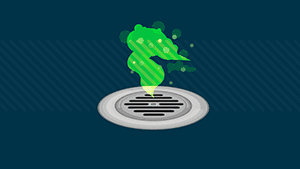Sewer lines are designed to protect you and your household from the unpleasantness and health risks of the liquid waste generated from your home. But sometimes, the system fails and releases sewer gases plus disgusting sewer gas odors into the home. What causes sewer gas odors in the home and is sewer gas harmful to human health?
Can sewer gas harm you?
Sewer gas, being a by-product of decomposing household waste contains a complex mix of gases and microorganisms. Some of these gases are harmful to humans and there is a huge possibility that sewer gas may also contain dangerous bacteria, warns Innovative Property Solutions. Gases commonly found in sewer gas are:
- Hydrogen sulfide
This gas is responsible for the rotten egg smell of sewer gas. It is toxic to the oxygen system of the body.
- Ammonia
Ammonia can irritate the eyes, nose, throat, and respiratory tract or result in organ damage and even death.
- Methane and carbon dioxide
Methane is a flammable gas and in large quantities can pose a threat. Carbon dioxide is harmless but should not accumulate in the home.
Exposure to sewer gas can cause headaches, nausea, vomiting, dizziness, poisoning, and asphyxiation.
What causes sewer gas smell in the home?
Several things can cause sewer gas odors in the home. The most common ones are:
- Basement water traps
Basement water traps keep sewer gas from flowing back into your home. If water traps are not maintained properly, the water in them will evaporate and let sewer gases leak into the home.
- Biofilm in the shower drain
Biofilm is a pinkish buildup that can happen inside the shower drain over time. It is mostly the result of shampoo and soap products washing into the shower drain. Buildup can cause sewer-like smells.
- Dried out P-trap or S-trap
S-traps and P-traps can be found beneath every sink in the home and near floor drains or laundry tubs. They trap water inside the curve to keep gases from flowing back into the home.
- Biofilm buildup in the sink drains
Biofilm can also build up inside the sink drain. Infrequent use of the sink will also result in sewer-like odors.
- From the toilet
The worst kinds of sewer gas odors come from the toilet because toilets are directly connected to the septic tank. Your toilet will leak sewer gas if the wax ring is damaged. Toilets will also leak sewer gas if the toilet base is cracked.
- Cracked or clogged sewer line
Improper maintenance can result in broken or cracked sewer lines. Cracked, clogged, or worn sewer pipes will let sewer gases leak into the home. Tree roots can also damage sewer lines, causing sewer gas leaks.
- Missing clean-out plugs
Clean-out valves provide access to the main sewer line. They make it easy to remove clogs and snake out the line. A broken or missing clean-out plug will let sewer gases travel into the home.
- Dirty or damaged roof vents
If roofing vent pipes are corroded or dirty, they could trap odors instead of letting them exit the home as they are supposed to.
- Roof vent pipes
Roof vent pipes let gases exit your home through your roof, instead of spreading inside the house. When roofing vent pipes are not properly cleaned or are corroded, gases will be trapped in the home instead of venting out.
How to find the source of sewer odors in the home
Finding the source of sewer gas odors in the home is hard because drainpipes are not pressurized like water pipes. If your water pipe is leaking, it is easy to find the leak because you can usually see water spraying from the hole. But sewer gas leaks from the drainpipes are different.
Given that there are so many ways that sewer gas can enter the home, you need an odor detection test, or smoke test, to pinpoint the source of a sewer gas leak. Odor detector tests use colored non-toxic smoke, pushed into the drain system, to locate the sources of sewer gas leaks.
Here is how the process works:
- Pour water into all the traps in the home to make sure they are not dry, especially traps that are not used regularly.
- Partially restrict the stack vents on the roof to create pressure (optional).
- A smoke blower is plugged into a cleanout plug or any other access point to the sewer line. The connection must be airtight to keep the smoke from escaping.
- The blower is powered up and allowed to run for a minute to create a draught in the system.
- A smoke candle is positioned in front of the blower and lit. Smoke from the candle is pulled in by the blower and pushed into the drain system
- Because the smoke is trapped inside the drain system, the only way it can get out is if there are leaks in the system.
- Once the smoke blower is running, walk through the home to see if smoke is escaping from any points.
- You can then fix the detected problems.


